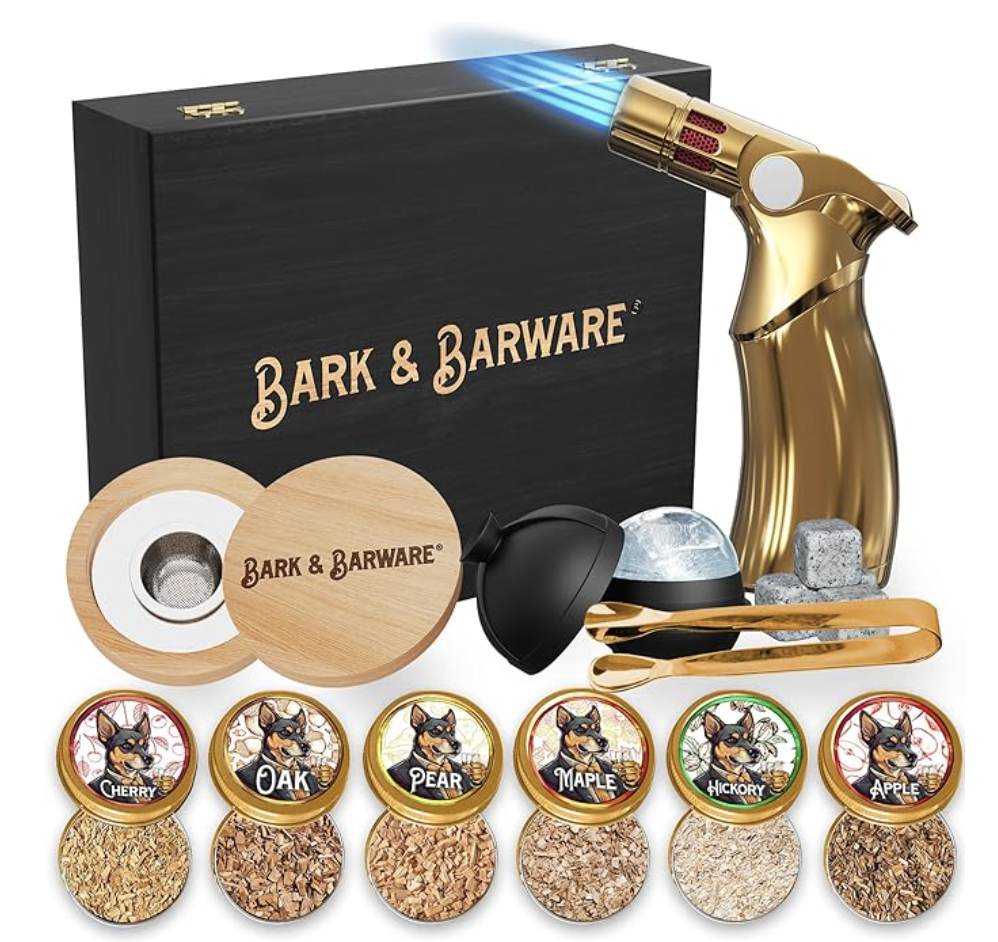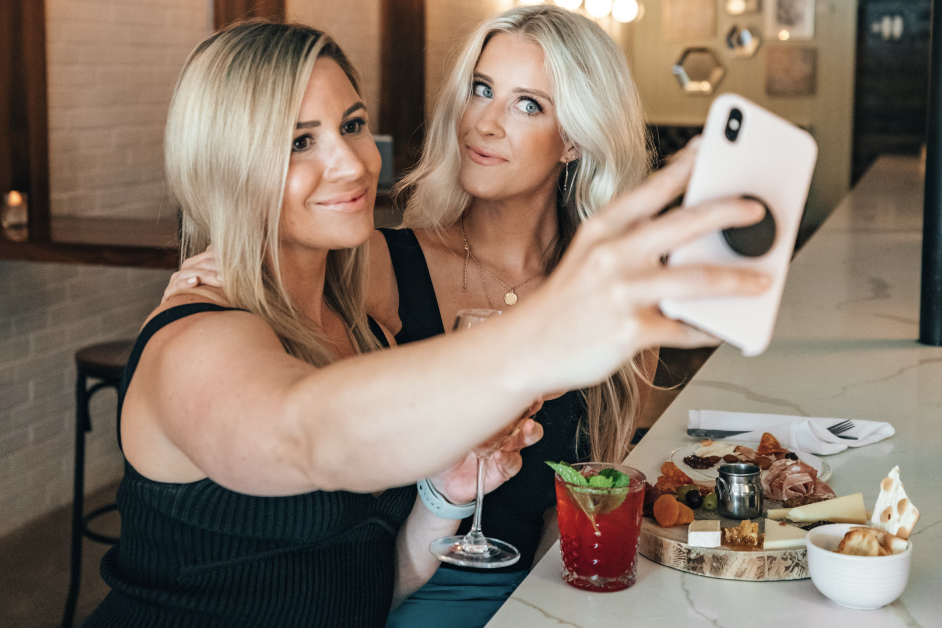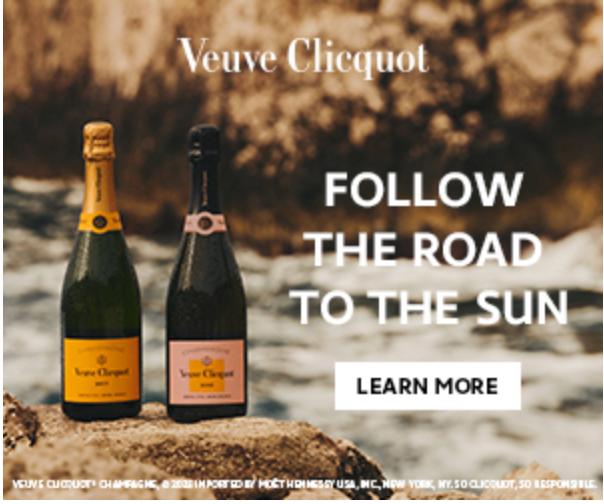Sexy Girls Night Out Drinks, but at home? Bark and Barware Shows You How with Cocktail Smoker
Bark and Barware enters the cocktail market with their premium cocktail smoker, including 6 flavors.

Today, Bark and Barware’s Harel Levy joins us for a conversation about cocktails, creating your long-lasting girls night out, picking the right flavors, the perfect pairings and more!
The below conversation has been edited for length and clarity. Find the full conversation at our YouTube channel.
Joe Winger: Can you tell us a little bit about your story? And what inspired you to create this cocktail smoker kit?
Harel Levy: I’ve been an entrepreneur for the last seven years. While there are no mistakes, I actually found [the cocktail smoker] by mistake. I was planning to buy something for my Dad. I usually won’t give something if it’s not 100%. So I’d rather not give a gift that I don’t really like. Because I really care about what the recipient is going to feel.
“I really love the idea of cocktail smoking kits. […] It’s another tool to have a great night.
I don’t want to give something cheap, because if you really love someone, you really want to make sure that everything is spot on, right?
Even on yourself, you will be more forgiven in terms of what you buy than someone else.
I really love the idea of cocktail smoking kits. It’s not that it’s only cool and it’s a great addition to having those nights with friends, with family. It’s another tool to have a great night.
I went to Amazon and I saw there is no one who actually sells it in a premium, wooden box. And with many flavors. I talked with [my company’s] CEO about it, what’s missing here.

We came up with a wooden box. It came from my passion to give something that looks good.
For almost a year, we went back and forth with factories. The smoke. The flavor. Details with the box.
When we released it, we were very happy. We knew my criteria. If I can give it to my Dad, not being afraid he’s not going to like it. Then I know that other people are also going to enjoy it because I have high standards for giving a gift to someone that I love. That’s how we came up with the product and the product.
The second thing we are planning is to bring a mixologist, make it a more holistic experience.
Extend the journey with our customers, give them cocktails, give them recipes, give them ideas, The journey doesn’t end when the transaction happens for us. We want to continue to build trust and serve our customers.
Joe Winger: You have a very comprehensive website. Can you walk us through your Cocktail Smoker Kit? When we buy it what do we get?
Harel Levy: There are six different chip flavors, the culinary torch, the smoke lid. Ice tongs, whiskey stones. Unfortunately, we don’t include butane [gas for the torch] because shipping is very heavily regulated,
“In every smoker kit you get six different chip flavors, the culinary torch, the smoke lid. Ice tongs, whiskey stones.”
We have six flavors: cherry, oak, pear, maple, hickory and apple. Our plan is to listen to our customers and come up with new flavors based on what they ask for. It’s not a one-time product release. We’re going to offer refills, extensions, more.
Each taste is very delicate. The world of wine, flavor, alcohol is so wide and you can get very specific sometimes. When you do get specific, you get the best results, right?
Joe Winger: Has there been one or two major lessons you’ve learned?
Harel Levy: Initially we had more flavors. After we gave out samples and heard about which flavors were the favorite, we removed some.
Joe Winger: You mentioned flavor pairing. What’s your favorite cocktail pairing?
Harel Levy: It’s a tough question because taste is something that is extremely subjective.
We usually put it with scotch. That’s our personal preference. Our customers get very creative with their ideas. That’s why we initially started with those six flavors. But listening to customer feedback, it’s going to grow and change.
Joe Winger: Over a year of research and development, were there any unexpected surprises?
Harel Levy: A lot of people agreed with me on the wooden box. People started asking for smoke refills. They’re going through the smoke faster than I thought. When we launched, I was expecting this to be used for special occasions. But people are using it every week, all the time.
Joe Winger: In the past few weeks, I’ve been in Los Angeles, Brooklyn, New York, Philadelphia. All those places have bars where they’re serving smoked drinks. Now people want to have that experience at home.
Harel Levy: That’s going to make you the hero of the party. You’re the one who brings the cool stuff. I always like to do that.
We really advise [anyone trying this] to taste all of the flavors. Not just one or two. The spectrum of what flavors someone likes or doesn’t like is very wide. You’re probably going to really like 1-2 [of the flavors], and less like the others.
Those 1-2 that you really like, we’re going to offer you refills.
When I host friends [at my house], I drink scotch and it goes well with cherry.
But it’s like a game. You try a lot of things. You find out something that you’re really going to love.
“That’s going to make you the hero of the party. You’re the one who brings the cool stuff.”
Joe Winger: This first kit is a starter kit or a sampler kit. I get those six flavors and I get to decide, “Oh my gosh, I really like this one. Now I need a refill.”
Harel Levy: Exactly. It’s exciting me on a personal level because I’m curious […]. What’s going to make people upgrade a scotch that costs hundreds of dollars?
I can play with the flavor. That will upgrade an experience for the end customer cost hundreds of dollars. I did my part, right? And for them, they’re going to be over the moon. They’re going to be super happy. It’s just going to become one of their routine.
“What’s going to make people upgrade a scotch that costs hundreds of dollars?”
Joe Winger: There are smoking kits all over the place. Dozens of competitors on Amazon. Why should someone choose Bark and Barware?
Harel Levy: It’s the full experience that we offer. It starts with the package. Then the flavors. Most of our competitors offer four, we offer six. We tasted all of the competitors and our flavor is better. Otherwise I would not have released the product.
Our post-purchase [experience] the recipes. We’re working with a mixologist to just create a mini course to go with the kit, go with specific drinks. Customers are going to have access to all of it. How do I mix it? What should I mix it with?
Joe Winger: What does the future of the brand look like?
Harel Levy: We’re planning to release big packages [re-fills] of each flavor. Second thing is the mini courses. We really want to inspire because that’s fun.
The process of drinking with friends, the process of smoking. It’s a fun process. You sit on your balcony, with friends, you open a bottle of wine as well. That’s a fun process.
Our goal is to inspire. Someone [will realize they] like a specific cocktail. We will give them all of the information on how to make it, how to mix it, then we earn a customer for life.
Joe Winger: You mentioned picking a cocktail is like picking a favorite kid. It’s so hard to do. What is your favorite cocktail to use with your smoker?
Harel Levy: Yeah, so that’s a great question. I like the combination of the apple and scotch.
Joe Winger: Because you’re a foodie, are there any specific cocktail and food pairings that you really enjoy with any of your specific flavors?
Harel Levy: My favorite is having an apple flavored scotch with a ribeye. Someone I work with loves the hickory flavor. That’s the beauty of this world, every person has their unique taste.
Shop for Bark and Barware’s Cocktail smoker hit on amazon here: https://amzn.to/3P5c42g
Learn more at: https://www.barkandbarware.com




[…] Absolut Cosmo is an iconic cocktail for a reason, and with its latest resurgence, we’re thrilled to be partnered with Paris […]
[…] Absolut Cosmo is an iconic cocktail for a reason, and with its latest resurgence, we’re thrilled to be partnered with Paris […]
[…] Absolut Cosmo is an iconic cocktail for a reason, and with its latest resurgence, we’re thrilled to be partnered with Paris […]
[…] Absolut Cosmo is an iconic cocktail for a reason, and with its latest resurgence, we’re thrilled to be partnered with Paris […]